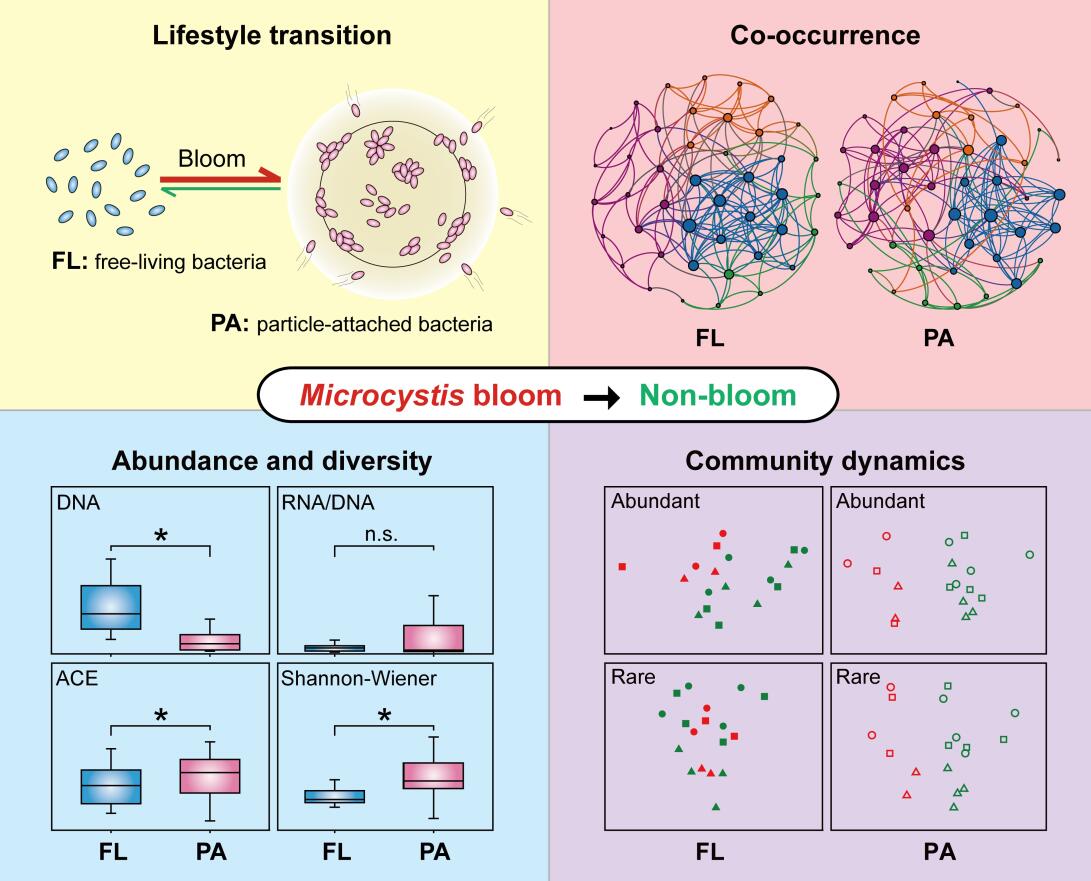Cyanobacterial blooms occur in aquatic ecosystem around the world and have adverse effects on water quality, recreation and food web dynamics. A cascade of changes in planktonic microbial communities have been observed during cyanobacterial blooms. Monitoring the dynamics of cyanobacterial and bacterial populations, and investigating their interaction and driving factors will help in mitigating and prevention of harmful cyanobacterial blooms, and enhance the ability to predict microbial response to environmental change. The composition of microbial communities can vary at the micro-spatial scale between free-living (FL) and particle-attached (PA) niches. However, it remains unclear how FL and PA bacterial communities respond to cyanobacterial blooms across water depths.
The research group led by Prof. Jun Yang examined the community dynamics of the FL (0.2–3 μm) and PA (> 3 μm) bacterioplankton based on 16S rRNA gene high-throughput sequencing in a subtropical stratified reservoir under Microcystis aeruginosa bloom and non-bloom conditions. Both FL and PA bacterioplankton communities showed different responses in alpha- and beta-diversities to the bloom, suggesting the idea that the responses of bacterial community could depend on lifestyle. Specifically, abundant PA subcommunities showed a greater variation between bloom and non-bloom groups than abundant FL ones. In contrast, rare FL subcommunities exhibited a stronger response to water depth than rare PA ones. Furthermore, the rare taxa exhibited a preference for PA status, shaped and stimulated by the M. aeruginosa bloom. Our analyses also showed that PA bacterial communities were generally more diverse and appeared to be more responsive to routinely measured environmental variables than FL bacteria. Microcystis blooms had a facilitative influence on specific bacteria (e.g. Actinobacteria, Bacteroidetes, Firmicutes) by mediating the transitions from free-living to particle-attached lifestyles. Altogether, these findings highlight the importance of bacterial lifestyle and abundance in understanding the dynamics of microbial community in cyanobacterial bloom aquatic ecosystem.
The research entitled "Community dynamics of free-living and particle-attached bacteria following a reservoir Microcystis bloom" was published in an international journal of environmental science and ecology. Science of the Total Environment, 2019, 660: 501–511(IF=4.610) (Min Liu, Lemian Liu, Huihuang Chen, Zheng Yu, Jun R. Yang, Yuanyuan Xue, Bangqin Huang, Jun Yang*). This study was supported by Science & Technology Basic Resources Investigation Program of China, the National Natural Science Foundation of China, and the Natural Science Foundation of Fujian Province, China.
